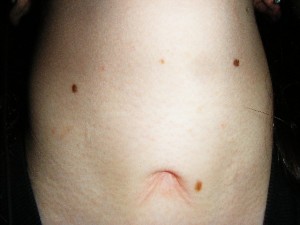
Lipofilling by fat injection grafting has become a popular method of treating many soft tissue defects. It can create a new soft tissue interface depending upon how much fat survives. Given that some trach scars are both wide and indented, fat grafting is often used in tracheostomy scar revisions. I often combine a dermal-fat graft with scar excision and closure to solve the soft tissue loss problem in the neck.
In the July 2013 issue of the Journal of Craniofacial Surgery, a paper entitled ‘Management of Tracheostomy Scar by Autologous Fat Transplantation: A Minimally Invasive New Approach’ was published. In a clinical study of ten patients with retracted and/or wide tracheostomy scars, fat injection treatments were done under local anesthesia or sedation. Before injecting the fat, the scar bands between the skin and the underlying tissue were released with a needle. (subcision) Most tracheostomy scars treated were done with two sessions six to twelve months apart.with an interval of 6 to 12 months. Injected fat volumes was between 3 and 10ccs during the treatment and an additional 3 to 5ccs during the second injection. In some cases (30%), scar excision was performed as a final procedure. All patients achieved an aesthetic improvement and were satisfied with the result at long-term follow-up. (near two years)

Dr. Barry Eppley
Indianapolis, Indiana


